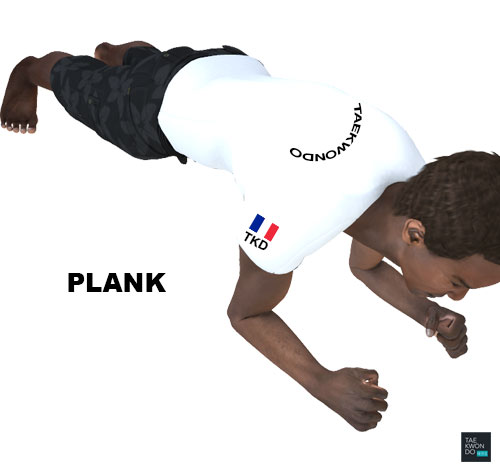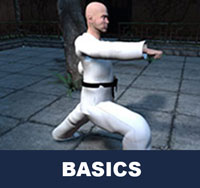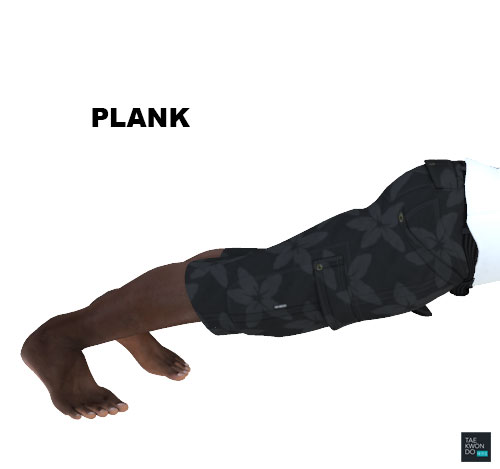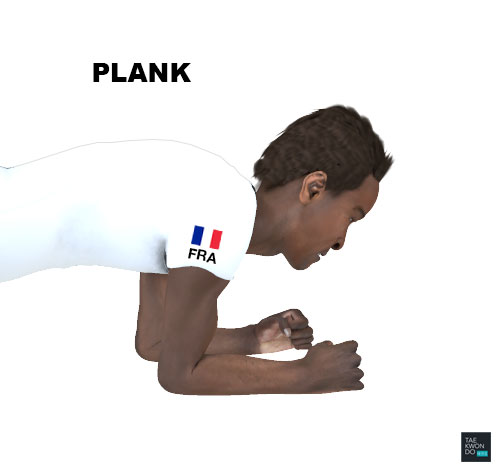Taekwondo 태권도Taekwondo Preschool
When you reach senior belt you are expected to guide the junior belts when they are beginning Taekwondo such as showing by example. To advance from one rank to the next, students typically complete promotion tests in which they demonstrate their proficiency in the various aspects of the art before a panel of judges or their teacher. View Taekwondo belt levels »

About Plank
The risks and benefits of combining stretching with warming up are disputed, although it is generally believed that warming up prepares the athlete both mentally and physically.
* Please see a certified Master Instructor ( 사범님 sabeomnim ) for training. Proper guidance and instructions are needed to ensure safe training.
The plank (also called a front hold, hover, or abdominal bridge) is an isometric core strength exercise that involves maintaining a difficult position for extended periods of time. The most common plank is the front plank which is held in a push-up position with the body's weight borne on forearms, elbows, and toes.
Many variations exist such as the side plank and the reverse plank. The plank is commonly practiced in pilates and yoga, and by those training for boxing and other sports.
The plank strengthens the abdominals, back, and shoulders. Muscles involved in the front plank include:
- Primary muscles: erector spinae, rectus abdominis (abs), and transverse abdominus.
- Secondary muscles: (synergists/segmental stabilizers): trapezius (traps), rhomboids, rotator cuff, the anterior, medial, and posterior deltoid muscles (delts), pectorals (pecs), serratus anterior, gluteus maximus (glutes), quadriceps (quads), and gastrocnemius.
Muscles involved in the side plank include:
- Primary: transversus abdominis muscle, gluteus medius and gluteus minimus muscles (abductors), the adductor muscles of the hip, and the external, and internal obliques.
- Secondary: gluteus maximus (glutes), quadriceps (quads), and hamstrings.
Difficulty of Warm-Up Exercise
The risks and benefits of combining stretching with warming up are disputed, although it is generally believed that warming up prepares the athlete both mentally and physically. The more difficult the warm-up, the more practice may be needed for the purpose of improving or mastering it, as in the phrase 'practice makes perfect'.
* Please see a certified Master Instructor ( 사범님 sabeomnim ) for training. Proper guidance and instructions are needed to ensure safe training.

Taekwondo Basics
Here is where you can learn more about Taekwondo 태권도. Knowing the fundamental basics is very important for your learning path as you build your skills and knowledge. There are certain rules that need to be followed to show respect to the master ( 사범님 sabeomnim ), the instructors ( 교사님 gyosannim ), other practitioners and to the martial arts. They vary between schools but many have similar rules and guidelines. For more information View Taekwondo Basics »
Please follow the guidance of a certified Master Instructor or trainer when doing sports related activities. The article provided on this page is information that is widely available on Wikipedia article "Plank (exercise)". Risk of injury can be reduced by completing an effective warm up consisting of a heart raiser to get your pulse up, followed by sport specific dynamic stretches (stretches whilst moving).
There are five tenets defined in the International Taekwondo Federation (ITF) and several more in World Taekwondo (WT).
Integrity ( 염치 yeom-chi ): "Although it may be similar, this form of integrity takes on a more wider role then defined in the common dictionary. In taekwondo, integrity means not only to determine what is right or wrong but also having the conscience to feel guilt if one has done wrong and to have the integrity stand up for what is right." View Taekwondo Tenets »
RESOURCES
This article uses material from the Wikipedia article "Plank (exercise)", which is released under the Creative Commons Attribution-Share-Alike License 3.0.































